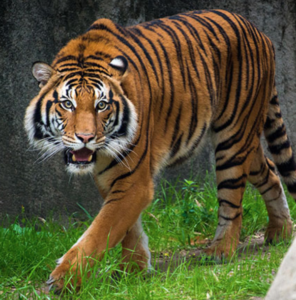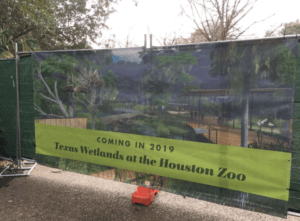The New Wave of Zoo Marketing
Published on March 26, 2018, at 1:54 p.m.
by Cara Bolt.
Traditionally, zoos have been marketed as places where people can see wild animals up close. In more recent years, several large zoos have been shifting focus to promoting conservation. Some people are turned off to the idea of seeing animals in cages — now wanting realistic exhibits, with an emphasis on conservation.
One zoo that promotes conservation is the Houston Zoo. Shari Okin, owner of Strike Marketing, the zoo’s agency, shared that when someone buys a ticket, part of the money made goes to conservation programs around the world.

Dr. Scott Cohen and Neil Carr at the University of Otago in New Zealand conducted a global study of 54 zoos to “assess the image that zoos are currently portraying to the general public to see how different roles are advertised.” Their results were that while zoos have shifted to promoting conservation, many zoos could be promoting it in more depth.
According to a 2015 CMO article, one effective zoo marketing strategy is finding the middle ground between promoting conservation and creating entertainment. The National Zoological Gardens of South Africa led a report in 2014, which stated that “to attract and satisfy visitors, marketers need to understand and internalize visitors’ needs.” This primarily means determining the reasons why someone would visit a zoo. Is it for education or entertainment?
At the Birmingham Zoo, Kiki Nolen-Schmidt, who works in the public relations department, said the zoo promotes conservation for the animals and at home. “We encourage people to turn off their lights and not leave their faucets dripping,” she explained.
Likewise, “a former zoo employee did some research on top-performing zoos and came up with all these events to promote awareness and create an extra incentive for people in the community,” Okin said. “These one-off events educate people and bring in more money for the zoo.”
Zoo Atlanta is another example of a zoo that is merging consumer experiences and conservation. As part of the Association of Zoos and Aquariums’ Species Survival Plan (SSP), Zoo Atlanta contributes to the program with new animals’ births.
“The ultimate goal of the SSP programs is to help maintain healthy, genetically diverse and self-sustaining animal populations within North American zoos,” Rachel Davis, director of communications at Zoo Atlanta, said.

Many zoos have made steps toward creating exhibits that mimic the animals’ habitats. For example, the Woodland Park Zoo in Seattle, Washington, has won exhibit design awards for the jaguars, penguins and grizzly bears exhibits. With the Houston Zoo, there has been new interest in creating similar exhibits. A “Houston Chronicle” article from January 2018 noted that the Houston Zoo is building a new exhibit to showcase the Texas Wetlands, which have a large variety of animal and plant life.
“We’re in the second phase of a three-part expansion [of the Birmingham Zoo]. It’s going to be a better asset for the community when we’re done,” Nolen-Schmidt said. “There’s going to be a new front gate, which will provide quicker check-ins for guests and overall, be safer.”
Zoos aren’t without their problems. One main challenge is something that can’t be controlled: the weather.
Some animals aren’t equipped for the warm weather. At the Dakota Zoo in Bismarck, North Dakota, animals are put first when the heat arrives. Zookeepers give animals cool treats and place additional sources of water in their exhibits.

One challenge for the Birmingham Zoo is to stay current in people’s minds. Nolen-Schmidt stated that with so many attractions in Birmingham, it’s hard to stay fresh. In regard to other zoos, Birmingham Zoo has a unique way to position itself.
“We’re the only zoo in the state accredited by the Association of Zoos and Aquariums. It’s a long process, but it ensures that we stand out,” Nolen-Schmidt said.
Sometimes, challenges arise when a budget is limited, especially when a zoo is a nonprofit organization. Such is the case with Zoo Atlanta, according to Vice President of Marketing and Membership Tracy Lott, who stated, “We find ways to stretch our limited advertising budget.” This “stretching” occurs through investing in digital media and paid media.
A revolution is occurring in zoos across the country to address the public’s changing needs. No longer do people want to simply watch animals, but they also now want to see zoos focus on issues of conservation and animal wellness.




